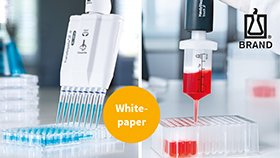Majulah Singapura
From Fishing Village to Asia’s Biopolis (Pt I)
Career strategies for young European scientists
by Ralf Schreck, Labtimes 03/2013
Page 1 | Page 2 | Page 3
Sizzling biopharma and medtech
The healthcare market in Asia is fast growing and for many companies Singapore has become the first choice as a gateway to Asia. Multinational pharmaceutical companies but also the leading medical technology companies have recognised that it is vital to have a foothold in the region. The Bio-Innovation Scorecard just revealed that Singapore is the third most innovative biotech nation, only defeated by the US and Denmark. This makes it an attractive destination, not only for setting up manufacturing plants but also for operating R&D facilities. In the Scorecard by the Scientific American Worldview magazine and the US Biotech Industry Organization, Singapore was evaluated together with 49 other countries in several categories, including education and scientific workforce as well as enterprise support for R&D. Singapore’s competitors in Asia, such as Hong Kong (13th), South Korea (22nd) or China (43rd) only occupied lower ranks. Singapore scored high with respect to enterprise support, capital availability, infrastructure and scientific talent retention but received no primary ratings with respect to intellectual property protection.
Biopharmaceutical R&D and manufacturing as well as medical technology development are on their way up. Singapore’s biomedical manufacturing output has been raised over the last decade more than fourfold to annually € 14 billion and contributes right now to roughly 5% of the national GDP. Biologics have developed into economic drivers, although it was only six years ago that Singapore started to provide incentives for this sector. Eight out of ten major global players have opened facilities for the production of biologics including GlaxoSmithKline, Lonza, Roche and Baxter. Their past investments are estimated to be in the range of more than € 1.5 billion. And the influx of foreign capital does not take a break. Novartis, which is already operating an Institute for Tropical Diseases and four production facilities for pharmaceuticals and eye care products, started in February with the construction of a new € 400 million state-of-the-art biologics manufacturing site, focusing on cell culture technologies for drug substance manufacturing. In addition, Amgen just announced they are to build a new € 160 million factory at Tuas Biomedical Park for its next generation of monoclonal antibodies.
Made in Singapore
Bright prospects also apply to the medical technology sector, which accounts for 9,000 jobs and an annual output of € 2.7 bn. Thirty global players including Becton Dickinson, Biosensors, AB SCIEX or Siemens Medical Instruments as well as local start-ups such as Veredus Labs and HealthSTATS carry out R&D or product development activities, and use Singapore as their regional spring board. On a global scale, 70% of all microarrays and thermal cyclers, 40% of mass spectrometers and 10% of contact lenses are manufactured in Singapore. As part of the welcome package for multinational companies, programmes are in place to meet their increasing demands for a skilled workforce. For example, the € 30 million Industrial PhD Programme (IPP), which is a joint effort of the Ministry of Education, the Economic Development Board and universities, is supporting about 200 students in research projects with leading companies until 2015. Tuition fees are waived for IPP students and they receive on top a monthly allowance of € 2,000. Participation in the IPP is, however, limited to nationals and permanent citizens of Singapore.
The same restriction applies to the Singapore-Stanford Biodesign (SSB) programme, which aims at the next generation of medical technology innovators in Asia. SSB comprises a cooperation between Stanford University and various Singaporean players. SSB Fellows will work in a multidisciplinary team with a background in engineering, medicine and business, and receive tuition, a stipend and international travel support. Six months are spent at Stanford and six months in Singapore. The fellowship may be extended for another six months. In addition, a Development and Apprenticeship programme was set up for the process and biomed industry to generate a talent pool of 300 manufacturing specialists.
R&D at the top of the political agenda
The particular importance of science and innovation for Singapore is highlighted by the fact that RIEC, the major political advisory body, as well as the National Research Foundation, the second largest funding agency, have been associated with the Office of the Prime Minister Lee Hsien Loong since 2006. The Research, Innovation and Enterprise Council (RIEC) is chaired by the Prime Minister himself and gives advice to the Singapore Cabinet on national research and innovation policies, and strategies. Its overall mission is to transform Singapore into a knowledge-driven economy with a strong research and development base. This is primarily accomplished by encouraging new initiatives in science and technology, and by catalysing new areas of economic growth; it is implemented via the National Research Foundation NRF.
There are 22 RIEC members including the ministers of the relevant ministries with activities in science and innovation. Since there is no single Ministry for Research, Science and Innovation in Singapore, this is primarily directed by the Ministry of Trade and Industry with the largest R&D budget for economic-oriented R&D and related investment activities; the Ministry of Education is in charge of academic research and the Ministry of Health with a smaller budget for health-related R&D activities. In addition, further support comes from distinguished members of science, technology or business including, for example, Robert Brown, the President of Boston University, Wilhelm Krull, the Secretary General of the German Volkswagen Foundation, or Sun Yafang from Huawei Technologies, the world’s largest telecommunication equipment manufacturer with headquarters in Shenzen, China.
At the level of funding bodies, there are at least five major players in Singapore, which have their own funding streams but, in addition, also co-fund common initiatives and programmes. Almost any funding body may provide funding possibilities for individuals, either as competitive research grants or fellowships.
Famous five on a treasure island
A*STAR, the Agency for Science, Technology and Research, is the leading funding body in Singapore. It was established in 2002 and is in charge of an annual € 825 million budget, fixed in the last funding period. A*STAR operates 14 own research institutions and several additional consortia and centres with more than 2,000 scientists. A*STAR is promoting the interaction between Singapore’s research community and the business sector, doing everything to support companies to get their innovations or products onto the market as quickly as possible. Via the A*STAR Graduate Academy the outgoing and incoming mobility of PhD students and postdocs is promoted.
The second-largest funding body is the previously mentioned NRF, which is catalysing R&D in new growth areas for science and economy. In the past five-year period, the NRF had a total budget of more than € 3 billion. Its activities are introduced in more detail below.
The Singapore Economic Development Board (EDB) is Singapore’s lead agency for planning and executing strategies that enhance its position as a global business centre. With respect to R&D, EDB runs a number of programmes for companies including co-founding schemes encouraging R&D investments to support the set-up of new research and development centres, the development of novel and strategic in-house research capabilities or educational measures to train employees in new technologies. The current annual R&D budget of EDB accounts for more than € 330 million.
The Academic Research Council (ARC) is a council under the Ministry of Education and acts as an advisory body for academic research policies and strategies at universities. The Academic Research Fund (AcRF), which was initially set up by the Government in 1994, is charged with the task of funding academic research at Singapore universities. The fund’s annual budget was increased significantly from € 20 million in the beginning to over € 150 million in the current funding period.
The National Medical Research Council (NMRC) oversees the advancement of medical research in Singapore with a past annual budget of about € 55 million. Funding measures include individual fellowships and awards for clinician scientists and the support of individual or network projects at healthcare institutions.
Millions to set up a research group
The National Research Foundation (NRF) was established in 2006 and is a department within the Prime Minister’s Office. The mission of NRF is to develop strategies and policies as well as to coordinate the activities of different agencies and to fund strategic R&D initiatives with potential economic benefit for Singapore. Funded are strategic initiatives and programmes using top-down as well as bottom-up approaches. For example, several large-scale strategic research programmes have been supported, including “Biomedical Sciences-Translational and Clinical Research” or “Marine and Offshore”. These initiatives promote Singapore’s competitive edge and catalyse economic growth. The Competitive Research Programme (CRP) funding scheme provides substantial research grants for a larger research project or for smaller projects under a unifying topic. Grants cover between € 3 and € 6 million during a period of three to five years. CRP is open to private and public players, and proposals are evaluated on scientific merit as well as societal and economic impact. Five Research Centres of Excellence (RCE) are headed by world-leading scientists and should become global visible institutions. Examples are the Cancer Science Institute of Singapore (CSI Singapore), which is led by Daniel Tenen from Harvard Medical School, the Singapore Centre on Environmental Life Sciences Engineering, which is headed by Staffan Kjelleberg from the University of New South Wales and the Mechanobiology Institute with Michael Sheetz from Columbia University as director.
The Singapore National Research Foundation (NRF) Fellowship Scheme targets scientists below the age of 40 from all over the world to conduct independent research in Singapore. The scheme is open to all areas of science and technology, and there are no restrictions with respect to nationality. Fellows will be given complete independence and freedom to pursue their own directions of research and are free to choose their Singaporean host organisation.
A large amount of money is at stake. A research grant of up to € 1.9 million over five years should facilitate setting up a research group with at least one postdoc and two PhD students. In addition, the NRF Fellow receives a tenure track position and the salary of an assistant professor. There is a two-step selection process and short-listed candidates are invited to Singapore for interviews by an international panel and to visit potential host institutions. The number of fellowships per year is determined solely by the quality of the applicants and their research. In the last round, 142 applications were turned in, 22 applicants short-listed and 16 awards finally made, which comes to a success rate of 11%. Overall, in the six past calls more than 1,000 proposals were received and 64 fellows recruited. Three-quarters of applicants are of Asian origin with the majority derived from the US. So far, no announcement for the 7th round of NRF Fellowships has been published.
In part 2, you can read more about Singapore’s major research performers and future developments.
Internet Links
Page 1 | Page 2 | Page 3
Last Changed: 09.05.2013







